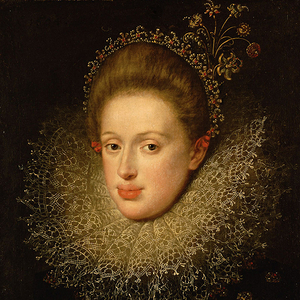The founderin
of the Crypt
How the Capuchins became the
guardians of the crypt

The foundation stone for our Viennese monastery was laid in 1622. Due to political circumstances, the consecration was carried out in two stages: The altars and side chapel in 1627, the entire church in 1632.
The Capuchin monastery in Vienna is closely linked to Austrian history. Capuchins were confessors to the ruling dynasty and are still the “guardians” of the Capuchin Crypt, where numerous empresses and emperors were buried.
The tomb of blessed Mark of Aviano is located in our church. The Capuchin was instrumental in the liberation of Vienna during the Turkish siege in the 17th century.
Today, due to its location in the center of Vienna, our house also has important social and pastoral tasks: The slw Vienna has its headquarters in our house (slw = “Seraphisches Liebeswerk”, the charitable work of the Capuchin Order), and in the winter months we offer a warming room for the needy. In terms of pastoral care, our confession and church services are very popular.
The monastery in Vienna is also an important international location for the Capuchin order. Capuchins from all over the world come to Vienna to study or learn German. There are always some students in our community who live in our house for a few weeks to several years.
Sundays and holidays: 10:00 a.m.; 11:30 a.m.; 4:00 p.m., 6:00 p.m. (polish)
Saturday eve mass: 4:00 p.m.
Weekdays: 7:00 a.m.; 4:00 p.m.
How the Capuchins became the
guardians of the crypt

Way of Life

.
Together with the Franciscans and the Minorites, the Capuchins formed the first order of St. Francis. St. Francis of Assisi (1181-1226) did not initially intend to found a religious order. He simply began to live the Gospel in radical poverty. He began quite simply with himself and thus convincingly demonstrated this to people of all times:
True liberation does not happen through power, money and pleasure, but in devotion to the kingdom of God.
Thousands soon flocked to him. And so a brotherhood was born. Its short, simple rules were soon approved by Pope Innocent III.
In a reform movement in the Order of St. Francis around 1528, many friars united in a new grouping; they were called Capuchins. The willingness to serve the kingdom of God with all their strength led to a wide variety of commitments. For example, Capuchins cared for the sick during plague epidemics and were the voluntary fire department in Paris. They were hermits and preachers, mendicant friars and diplomats, confessors and missionaries, craftsmen and scientists.
We Capuchins live in fraternities. Above all, we are brothers and focus on living the Gospel in poverty and fraternity as a praying and working community.
For it is only in following our Lord Jesus Christ and in connection with the Church that we receive the strength that holds us together and allows us to work meaningfully.
Our life as Capuchins is not limited to specific tasks. We seek the closeness of God in prayer and at the same time want to be there for people. In particular, we take care of the poor, those seeking help, the sick and the suffering and take on various pastoral tasks: Retreats, retreat days, adult education, pastoral care in confession and conversation; pastoral care for the sick, prisoners and pilgrims; teaching, work in the home or at a job; nursing, care for the disabled and orphans, etc. The current shortage of priests makes it necessary for us to look after a number of parishes.
Missionary work is a special task for us. Capuchins from Austria are active in Madagascar and Chile. The Capuchin Order also looks after missions on all continents. Today we are about 11,000 Capuchins all over the world. The Capuchins in Austria and South Tyrol currently form a province to which around 100 friars belong.
Anyone who wishes to join us and live with us in community in the spirit of St. Francis should be in good health and, if possible, have completed school or vocational training. These requirements are checked and clarified during the application period (postulancy). During the subsequent induction period (novitiate), you will get to know the order and its way of life and familiarize yourself with community life.
In order to get to know us, we offer the opportunity to live with us in a community for some time without obligation ("temporary monastery"). We invite you to join us. The training and further education for the respective area of responsibility is made possible and supported by the order.
Homepage of the Capuchin Province Austria-South Tyrol: